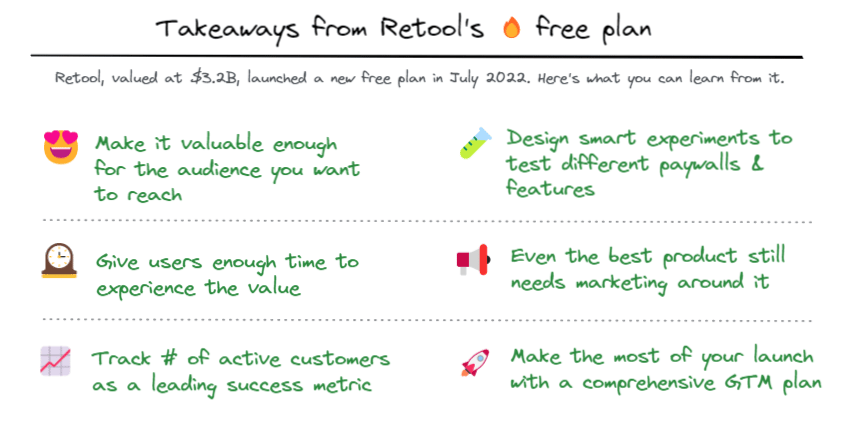Welcome back to the sixth edition (!) of The Gist by Growth Unhinged, real-world growth tactics you can actually use. So far you’ve 😍 editions about free-to-paid conversion including:
Usage paywalls for your free and/or paid plans
Smart trials to drive free-to-paid conversion at scale
This time let’s take a (baby) step back.
How do you design, test, and launch free plans in the first place?
It’s an important question because product-led companies almost universally allow prospective users to try-before-they-buy, delivering value before capturing value. But many free plans fall flat and fail to live up to expectations. User growth may never materialize – but cannibalization certainly can.
Retool, which allows folks to make custom internal tools, introduced their new free plan in July 2022 alongside announcing a $45 million fundraise at a $3.2 billion valuation. By all accounts the free plan has been a big win for Retool.
It wouldn’t have happened without this critical step 👇

Subscribe to Kyle Poyar's Growth Unhinged to read the rest.
Become a paying subscriber of Growth Unhinged to get access to this post and other subscriber-only content.
UpgradeA paid subscription gets you:
- Full archive
- Subscriber-only bonus posts
- Full Growth Unhinged resources library
